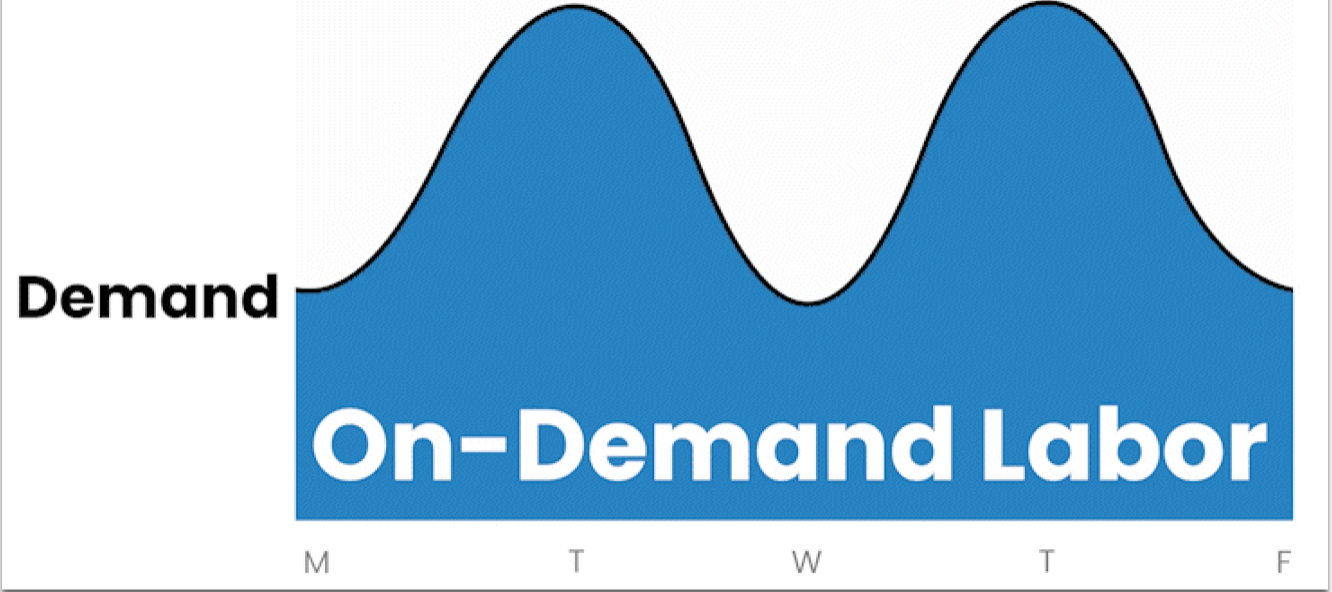POV: Operations Manager - Controlling the Uncontrollables in Manufacturing
Prior to serving as Vice President of Operations for Veryable's four Ohio markets, I spent time as an Operations Manager for a major American manufacturer where I worked to balance site level manufacturing execution with the ever changing needs of our customers and the respective inventory to do so. I worked closely with key Plant Managers and several Distribution Center Managers to make sure our customers were properly supplied. Working closely with these Ops leaders on a daily basis as we navigated the extreme volatility on both the supply and demand side during COVID, I’ve seen the impact that volatility can have on operations from a variety of different perspectives.
My biggest takeaway from my time in this role is that our ops leaders (Plant Managers, Supervisors, Planners, etc.) have all gotten really good at getting the job done with the resources they have. That’s not to say that everyone is always hitting their production targets or delivering on every KPI, but every leader I’ve worked with genuinely wants to do a good job. As an Operations Manager who facilitated interactions between sales and the plants, I worked closely with demand and supply planning - knowing exactly what the business needed and getting into the weeds with the plant leadership on what and how they’re going to deliver. The leadership teams in the plants are always actively working to use everything available to them to keep their people motivated and working hard to deliver what the business and its customers need. However, when a supplier runs late and you have to unexpectedly shift production schedules around, or an urgent order comes in from a priority customer, too often our leaders are left scrambling to figure out how to respond to those changes.Throw an unexpected equipment failure on top of those other issues and before you know it you’re missing the ticket and you can’t find a path back. Usually, one of the biggest challenges comes down to a combination of equipment and labor capacity. In some cases, there just isn’t enough equipment to deliver the quantities needed with the timeline provided. Other times, the challenge is labor. Either way, our ops leaders are often left trying to put together a puzzle, but no matter how they arrange things they can never quite get everything lined up because there’s a missing piece.
When our teams faced major changes outside of our control it introduced new challenges. We experienced this during Covid, but are seeing similarities in today’s economic downturn. Here are two of the ways we were affected…
Shutdown and Startup Complications
At the onset of Covid, factories were temporarily closed, and workers were furloughed for a period of time. While not an easy decision to make, it was relatively “easy” - from a procedural standpoint - to shut things down. You disrupt people’s lives, but in an emergency, you can shut operations down quickly to preserve cash for the business. However, when demand comes back – even if it's just for a few key items – turning that spigot back on is much harder than turning it off. Those people who you furloughed aren’t necessarily available, and even if they are, they might not be interested in coming back somewhere that just cut them loose a few weeks ago.
When we saw that supply was going to run out sooner than expected because inbound ocean containers had been delayed on top of shutting down domestic production, the solution was pretty straightforward - start the plants back up and start cranking out supply. However, what seemed straightforward on paper was much more difficult in real life. Getting production back to the levels we were used to wasn’t as easy as just flipping a switch and turning everything back on. The effects of that inability to rapidly scale operations ended up resulting in some very expensive decisions that had to be made to ensure continuity of supply.
Forecasting, Scheduling Mix, and Inventory
Another problem that arose from this situation was a result of the inherent error in demand forecasting and the close alignment between production and demand. In normal times, if demand is 50,000 units a month and you can produce 52,000 units, you’re able to sell some from inventory while backfilling inventory from production. Sell some straight out of production, and perhaps build a little inventory in preparation for next month’s demand if you have a large order coming up on a SKU you know you’re not going to run. This system works pretty well until you take out a couple months of production. As you sell from inventory, what once seemed like a large stockpile - in the aggregate - quickly becomes depleted in places. And even though you can theoretically make 52,000 units, you might only be able to make 2,000 units of the code you need the most and now you’re in a spot where you no longer have an inventory buffer at all by the time you realize you need to turn production back on. And while you used to be able to make 2,000 units of that critical code, when you first start production back up you can only make 700 in that first month and it’ll take months before you’re back to your historical run rate of 2,000. A miss on that code means you’re going to short-ship an order. As these situations arise on multiple codes, some of which compete for the same production equipment, you end up in a place where you’ve got a backlog of orders that - no matter how hard you try - you can’t find a way to satisfy every order with the resources you have available to you.
Hindsight is 20/20
If Veryable had been a part of our workforce strategy, rather than shutting things down and furloughing employees, the organization could have started with a more measured approach and scaled back on Veryable labor to keep their full-time employees on board while still cutting costs. If it was clear that a deeper cut was necessary, they would have been able to make an immediate move while they assessed the situation before deciding to furlough employees and shut down factories. Assuming shutting down was still necessary, when demand picked up on a few key codes, they could have responded faster by bringing in the critical supervisors - supplemented with their best Veryable operators - to start getting production going immediately instead of deliberating over whether or not to start the plant back up. This would have helped them respond to demand faster. Once it was clear that the plant needed to come back to full operations, they could have flexed down on Veryable labor while bringing back the full-time employees. Then, once demand got to a level greater than the full-time employees could handle, Veryable would have been there to supplement with a trained, flexible extension of the workforce just as they had been when business was humming along before everything shut down. Rather than missing the ticket and having those misses pile up, they would have been able to meet their ticket attainment targets to deliver what the businesses needed faster while hitting their KPIs in the process. Veryable would have given the plants the missing piece of the puzzle they needed to respond in a time of uncertainty and deliver what the business needed in a matter of days instead of months.
Our Mission in Action
Veryable’s mission is to revitalize the American manufacturing sector by allowing businesses to “variablize” labor costs in small increments. This lets them increase costs only as their output increases, which will empower businesses to scale while maintaining a lower and more constant cost structure.
We do this through our technology, which enables us to transform an antiquated and inefficient labor market into a real-time marketplace for labor. This will put more people to work and relieve the burden on producers, improving overall productivity and enabling organic growth.
Here are a few ways that you can prepare for the inevitable ups and downs that operations leaders deal with…
- Understand How to Create Down Cycle Agility, knowing how and when to pull back can be just as important as taking on new work in a growth environment.
- Understand your industry and the economic environment and build a Recession Strategy for your business, this will help minimize impact and capitalize on the rebound better than your competitors.

One of the biggest reasons I joined Veryable was to give operations leaders a resource they can count on to help them deliver what their business and its customers need. Sometimes, what the business needs is a way to protect margins and weather a down-tick in demand while still delivering the best possible service to its customers. Instead of having to rely on our operations leaders being really good at “figuring it out”, we can give them a resource in Veryable that allows them to consistently deliver results in a cost-effective manner. Integrating Veryable into your operations is truly one of the best things you can do to give your operations leaders the resources they need to deliver the maximum return for the business and the most value for the customer. If you’re asking your team to get the job done, make sure they have the tools they need to deliver results. Veryable’s team of experts are here to help businesses work through their specific challenges and opportunities to build a flexible workforce that is purpose built to their unique needs.
Reach out to your local office today to get that conversation started.
Want to learn more?
Previous Posts
Don't Call Yourself Lean If You Don't Use On-Demand Labor
The Future of Manufacturing and Logistics
Create a free business profile today to explore our platform.






